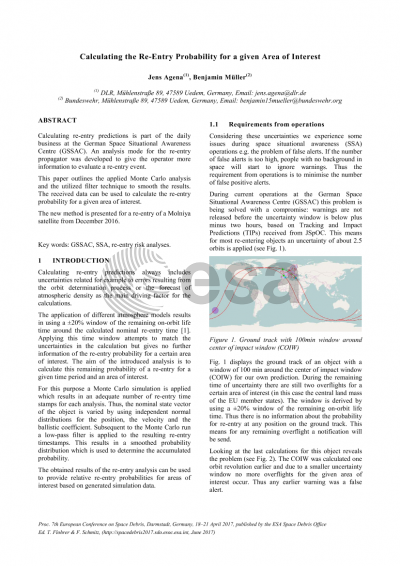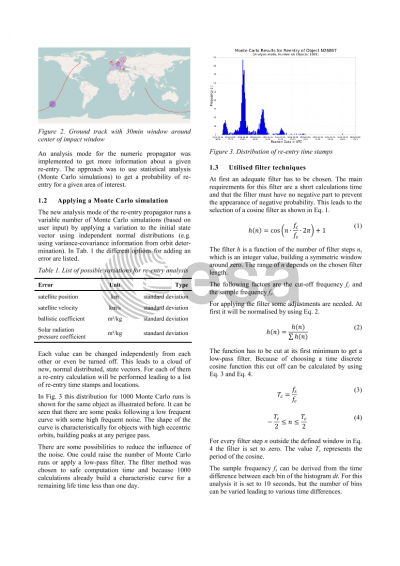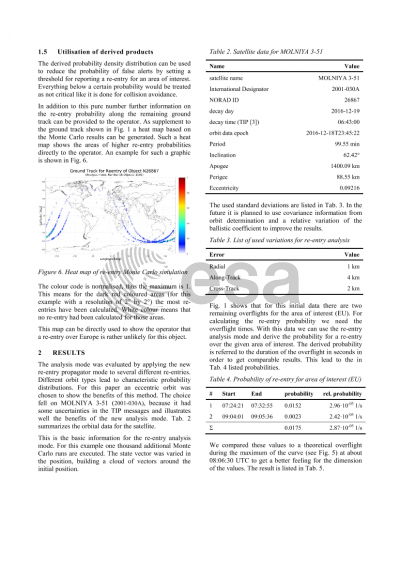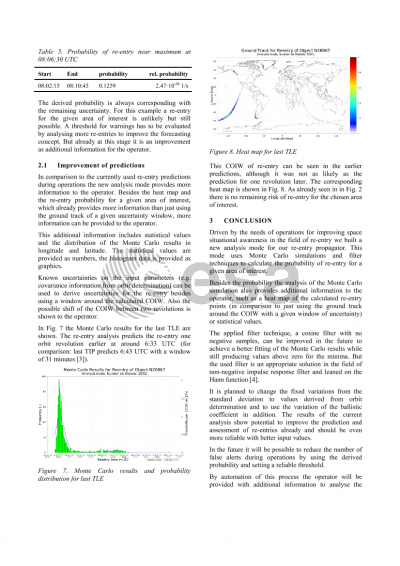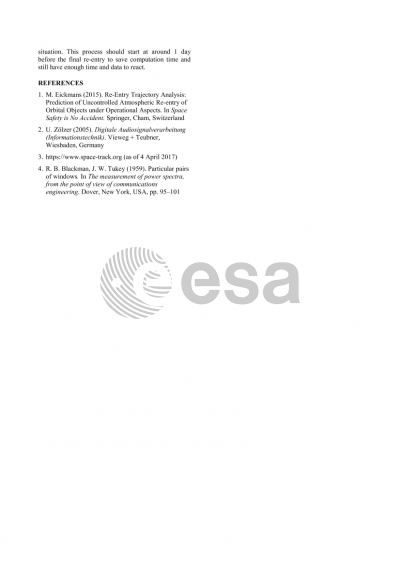Document details

Abstract
Calculating re-entry predictions always includes uncertainties related for example to errors of the orbit determination process or the forecast of atmospheric density with respect to solar activity. The application of different atmosphere models results in using a ±20% window of the remaining on-orbit life time around the calculated nominal re-entry time. This approach attempts to match the uncertainties in the calculation but gives no further information of the re-entry probability for a certain area of interest. The aim of this analysis is to calculate this remaining probability of a re-entry for a given time period and an area of interest.
For this purpose a Monte Carlo simulation is applied which results in an adequate number of re-entry time stamps for each analysis. Thus, the nominal state vector of the object is varied by using independent normal distributions for the position, the velocity and the ballistic coefficient. Subsequent to the Monte Carlo run a low-pass filter is applied to the resulting re-entry timestamps. This results in a smoothed probability distribution which is used to determine the accumulated probability.
The obtained results of the re-entry analysis can be used to provide relative re-entry probabilities for areas of interest based on generated simulation data.
The paper describes the Monte Carlo analysis in detail as well as the evaluation of the applied filter method. The output of the analysis is compared with real data extracted from the database containing past re-entry events.
Preview
